One of the best ways to decorate your home is by adding a feature wall that can add depth and character to your space.
Everyone wants their rooms to feel stylish and inviting! These are the 5 key steps that are best to consider when creating your DIY feature wall for your living room.

As an Amazon Associate, I earn from qualified purchases. If you do make a purchase from my site, I’ll get a small referral fee, at no extra cost to you, which helps me run the site! Read more about it in my Disclaimer.
1. How to Choose a Feature Wall
So, before you get started, which wall should be the accent wall?
Consider the Design of the Room
When it comes to feature wall rules, you want to choose a wall that will immediately draw your attention when you walk in and can be an interesting feature for your guests to admire.
The wall should catch the light coming into the room to expand the space otherwise the wall will feel dark and uninteresting during the daytime.
Consider the Features in the Room
A feature wall should highlight the existing features in the space. This could be a fireplace, a TV or design characteristics for a period property.
Consider the furniture in the room before decorating your feature wall. Any furniture against accent walls I’d consider part of the accessories, as they contribute to the overall look and balance of the space eg TV cabinet, chair and TV.
In a new build property, there aren’t necessarily any architectural features to highlight, so we focussed our feature wall around the TV. As this is the wall we face most evenings, I wanted to create a calming and pleasant space to relax and appreciate.
2. Material & Colouring
After you have chosen your living room accent wall, you need to think about the material. Do you want a patterned wallpaper feature wall, a brick feature wall or a painted feature wall?
Because it is a ‘feature’ it’s almost like an accessory so you can be bold with the style when the rest of the room is in a neutral tone.
Tip: Match your accent wall to the shades of your furniture!
I went for a dark grey feature wall to complement my patterned rug. One painted wall in a single colour is a good way to add colour to the room without overpowering the space.
Choose a colour that contrasts to stand out. If the room is bright and airy, a darker wall colour will work well. Spacejoy advised that when you combine dark and light living room paint colours, you create a dynamic look that adds depth and balance to your space.
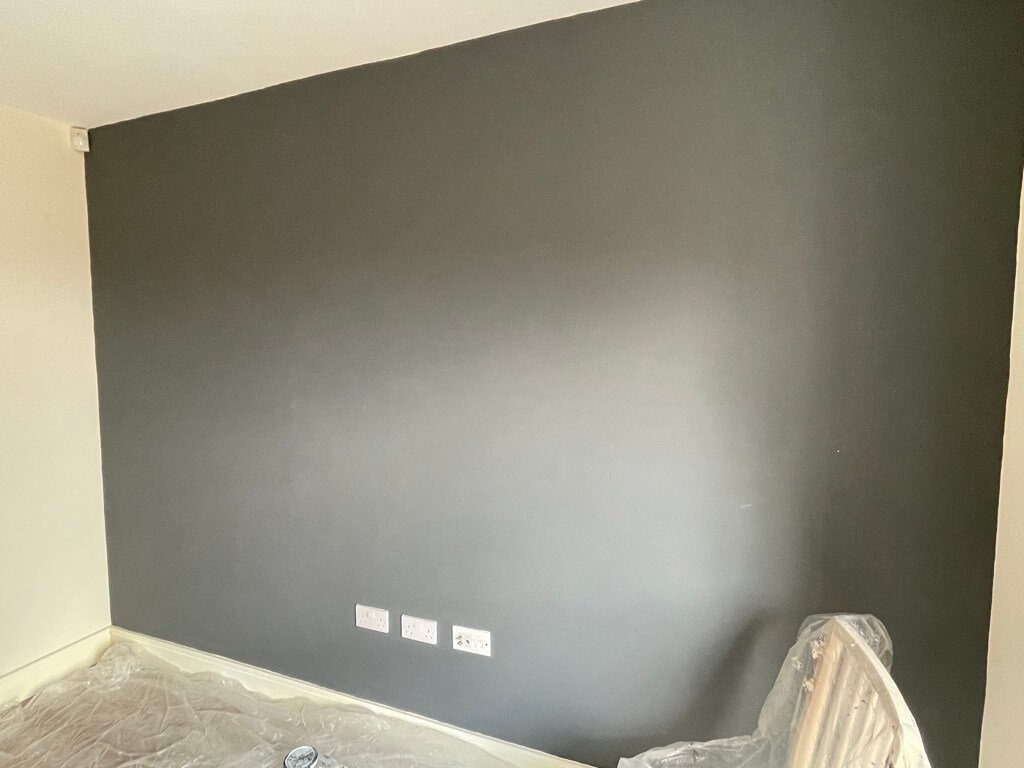
3. Painting
How to paint a feature wall:
- Clean the Wall
Before painting an accent wall wipe away any cobwebs (I just used kitchen roll) and clean with sugar soap if heavily stained.
- Move the Furniture
When painting just one wall you probably only need one dustsheet (an old bed sheet will do, but you can cheaply purchase plastic dust sheets). You should move the furniture to the other side of the room to allow painting space.
- Prepare
I picked up a couple of painting and decorating tips from my Mum, who recommends putting masking tape around the wall edges to avoid any paint getting on the surrounding walls.
- Paint
Paint in long strokes using a roller. Use a medium-sized paintbrush to finish off the corners more accurately. If the paint is a dark colour push harder to try and get a thicker application.
Remember to do two coats for a more even application! - Remove the Tape
Once the paint is dry, remove the masking tape and you should have a clean, straight line around your freshly painted accent wall.

4. How to Decorate a Feature Wall
If you’re decorating the living room on a budget you don’t have to spend big money to make the space feel inviting and relaxing. When decorating an accent wall, I’d say there are 3 elements to consider.
Accessorise
Some of the best accessories to add to an accent wall include candles, wall art, shelves and plants.
Floating Shelves – A great idea for DIY wall decoration are some floating shelves. There are so many ways to style floating shelves. You could put a long shelf above the TV with pictures, plants, candles or textured art. We chose the easy way and went for a couple of metallic square shelves to balance out the space. You can get some cheap ones from B&M or Amazon.
Clock – A large wall clock is also a great option. If you have a free-standing TV a stylish clock can elongate the space above.
Art – When it comes to art for the living room wall, there is such a broad range of pictures and frames at many price points. I went for a simple stencil drawing and frame as the art wasn’t a focus point for me.
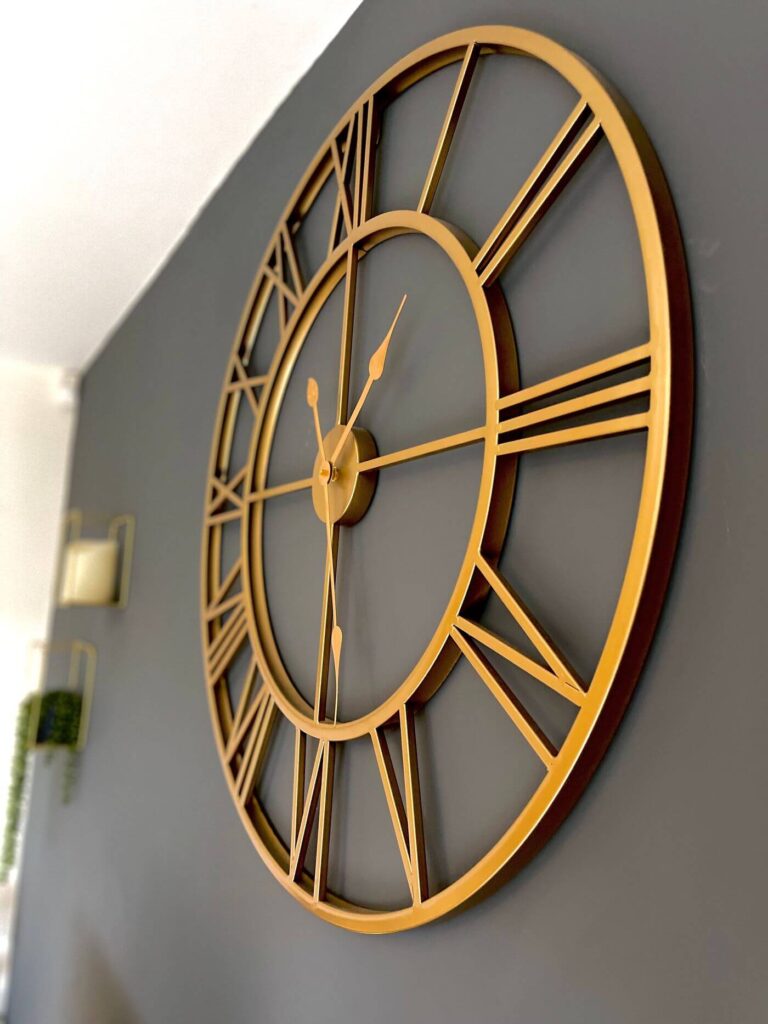
Colour Matching
Colour matching your furniture and accessories to the feature wall doesn’t have to be too complicated.
You could opt for:
- complementary colours on the colour wheel
- different tones of the same colour
- pick 2 colours that go well together and run with that.
Colour theorists say you should have a primary colour, a secondary colour and an accent colour. Sally from LovetoKnow has some useful tips for colour matching.
We mixed light and dark grey, with gold as the accent colour for a modern look.
Consider the wood tones in the room when choosing your colour scheme. We went for more neutral and cooler wood tones to complement the main theme colour, grey.
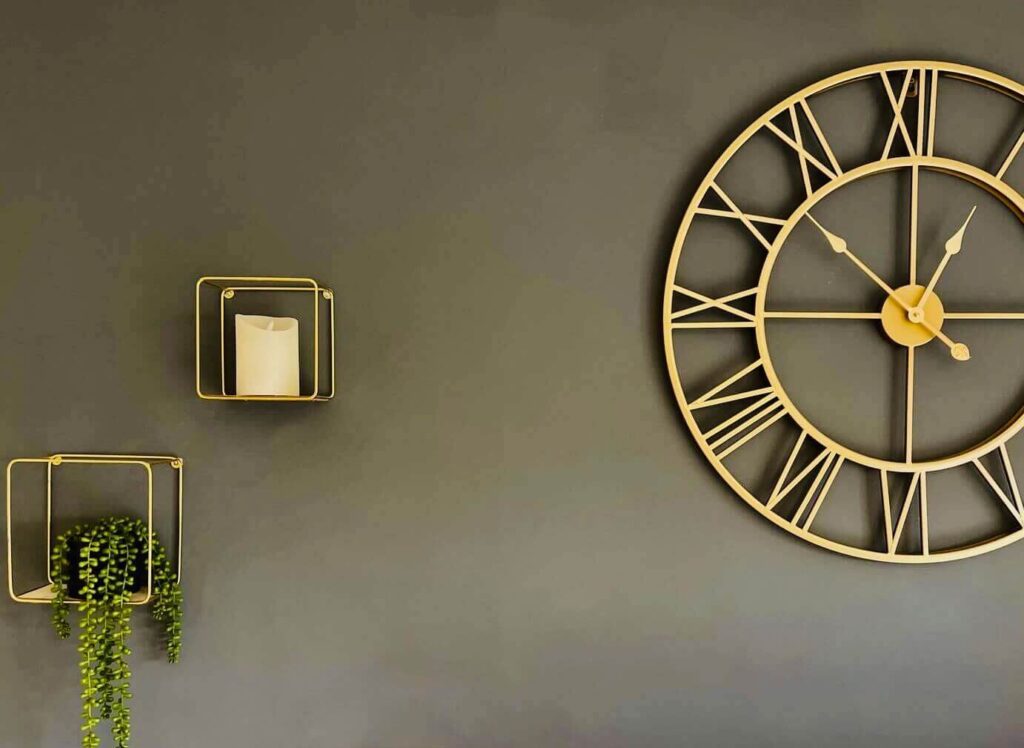
Lighting
There are different kinds of options to create mood lighting eg candles, fairy lights. I love my little LED tree light for the cosy evenings – here is a great option.
I’ve decorated one of our floating shelves with a battery candle – the real ones created too much soot and can mark the wall.
If you’re decorating a room cheaply, lighting some candles instantly elevates the space.

5. Balancing the Space
Amongst plain white walls, one feature wall will change the personality of a room.
The wall that is now a feature usually has a focal point. Make sure you don’t overpower the space with too many accessories so they complement the focus feature.
Monique from HomeDecorCraze suggests that, when decorating your living room wall, too much space is a problem, and too much clutter is a distraction.
Think about the shape of the wall and the design of the room when adding accessories. If the furniture against the feature wall isn’t symmetrical, consider separating the space into 3 vertical sections:
- Section 1 – our golden floating shelves are in keeping with the colour scheme. The candle and falling plant added a bit more dimension and texture to this asymmetric corner.
- Section 2 – the central area with the TV and cabinet was the focal point and the large wall clock added height to the space.
- Section 3 – I added ‘the cosy corner’ in section 3 to create the environment for a calming reading space.
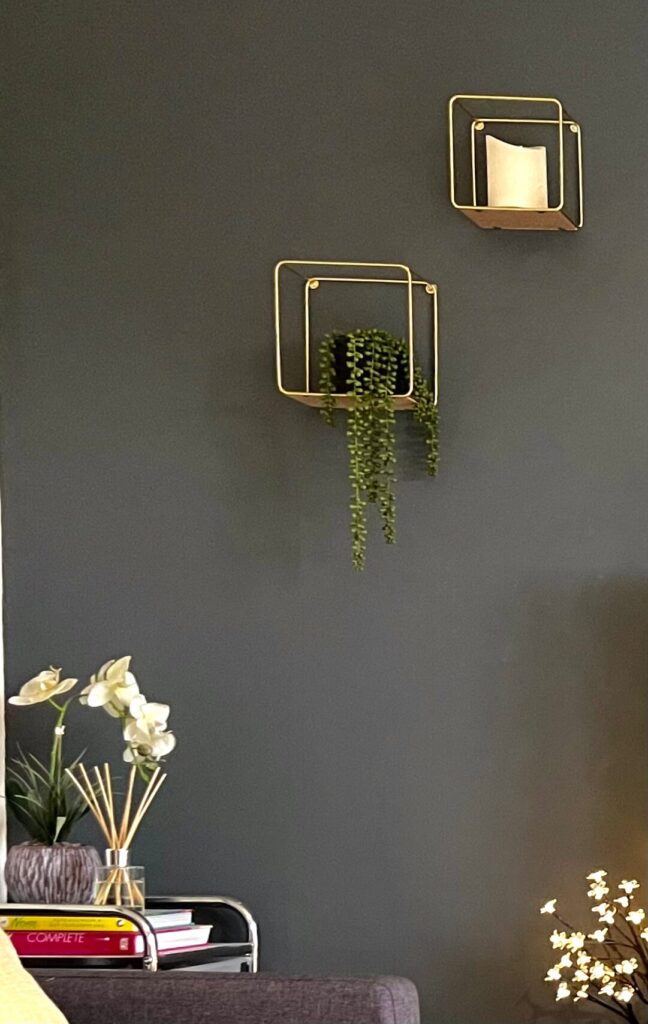
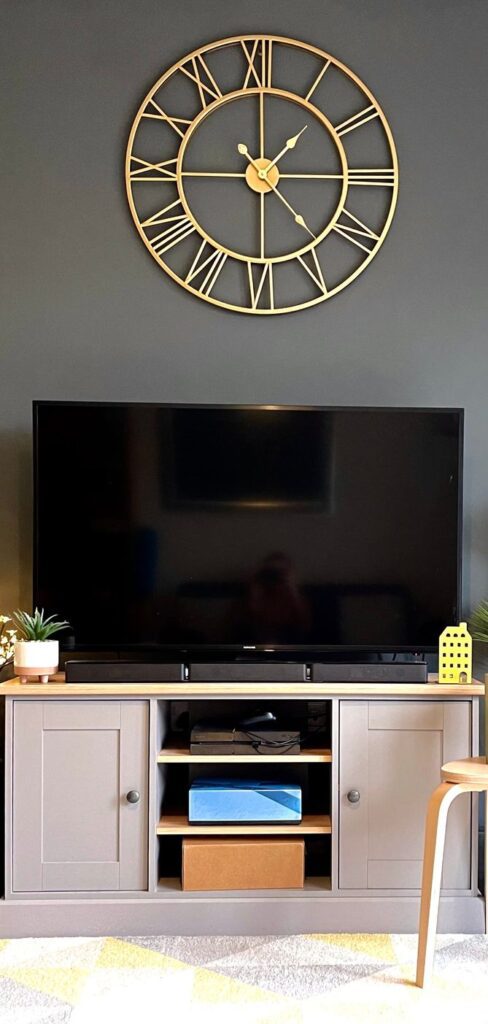

Here are our before and after pictures of the finished space that will hopefully give you a few feature wall ideas…
Before

After




